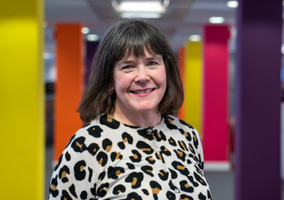The UK charity sector’s income increased by 9% to £69.1bn in 2021-22, following its first annual decline in eight years during the outbreak of the Covid-19 pandemic, NCVO’s latest almanac shows.
NCVO’s UK Civil Society Almanac 2024 says the rebound as the pandemic eased was largely due to a recovery in public donations and earned income.
Income from the public remained the largest source of funding for the sector at 48% of total income, a similar proportion to the year before.
However, government income decreased to 26% of total income from 30% in 2020-21, driven by a reduction in statutory grant and contract funding.
The proportion of income from the voluntary sector increased from 10% to 12%, while investment income remained at similar levels of 9%.
Public money to smallest charities halves
In contrast to large charities, those with an income of less than £100,000 (80% of organisations in the sector) saw their funding from the general public sharply decline.
Public donations to micro and small charities fell from 54% of their income in 2020-21 to 25% in 2021-22.
Income from the government became the largest source of income for these charities, rising from 15% to 37% in 2021-22.
By comparison, charities with an income of over £1m got most of their money from the public (51%), with 27% coming from government (down from 33% in 2020-21).
For charities with incomes over £100m, meanwhile, funding from the voluntary sector increased to 23% (from 15%) while money from the public declined to 40% (from 49%).
Despite relying more heavily on government support than larger organisations, smaller charities received only 4% of the sector’s statutory funding.
Ageing workforce
Charities have an older workforce on average than public or private sector organisations, the almanac says.
Some 28% of charity employees are now over 55 years old while those aged under 25 are underrepresented, making up 6% of the sector’s workforce.
The proportion of disabled employees in the sector increased to 28% in December 2023, compared to 23% in December 2022, which the report says reflects charities’ inclusive practices.
Women continue to make up more than two-thirds of charity workers (68%), while the proportion of people of colour in the sector has increased to 13% but still lags behind the UK population (18%).
‘Challenging picture’
Saskia Konynenburg, NCVO executive director, said: “Our 2024 UK Civil Society Almanac data paints a challenging picture for the voluntary sector.
“As the sector adapts to a changing environment and mounting economic pressures, it’s no secret that charities across the country are having to make difficult choices – scaling back, reducing services, or even closing their doors.
“New challenges are emerging all time, which means the role NCVO plays is more important than ever.
“Our practical support team helps thousands of small charities every year, and our help and guidance is used by organisations of all sizes day in day out.
“We are committed to learning from this data to ensure our services react to the needs of the sector, so we can help build a more sustainable future for charities and the communities they serve.”












